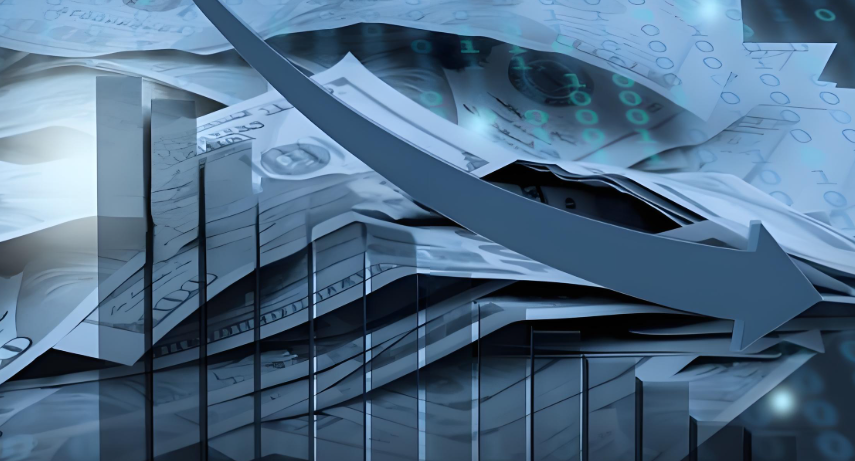Fed's December Rate Cut: What's Next?
Advertisements
The Federal Reserve, arguably one of the most powerful economic institutions in the world, finds itself at a crossroads as it prepares for its upcoming monetary policy meeting. The implications of its decisions resonate not only within the United States but ripple across global markets. Leading up to this week, anticipation and scrutiny surrounding the Fed's actions have reached a fever pitch, as investors and economists alike attempt to dissect the path ahead in light of fluctuating economic indicators.
This time around, economic forecasts suggest that the Federal Reserve is poised to implement a quarter-point cut in interest rates. This move, anticipated by market participants, would mark the Fed's third consecutive rate reduction this year. The context is crucial here: while the goal remains centered on curbing inflation, concerns loom large regarding the health of the labor market. The policymakers face a precarious balancing act, navigating between stimulating economic growth and maintaining inflation at bay.
A shift in sentiment is palpable within the ranks of decision-makers. Earlier this year, the Fed’s optimism regarding inflation trends had prompted a more aggressive approach to rate hikes. Now, however, officials display a cautious demeanor, signaling an increasing wariness about the workforce's resilience. Bill English, a professor at Yale University and former director of the Fed’s Monetary Affairs Division, illuminates this evolving perspective, noting that recent economic robustness paired with persistently high inflation complicates the roadmap to future interest rate cuts. English emphasizes that expectations should be tempered—a slower pace of rate cuts seems inevitable.
Despite a looming interest rate cut, various factors weigh on the Fed's decision-making process. Currently, officials maintain that the prevailing interest rates are curbing demand to an extent that assists in containing inflationary pressures. This aids in achieving a more neutral monetary policy stance that does not unnecessarily stifle growth. Additionally, signs of a potential easing in housing-related costs offer a glimmer of hope; the Consumer Price Index (CPI) data indicates that costs associated with housing—often a major contributor to inflation—are beginning to show signs of a long-awaited decrease, signifying a positive shift.

The narrative surrounding productivity also deserves attention, as recent reports have indicated a particular surge. This uptick in productivity, characterized by increased output per worker, has led some analysts to speculate that robust wage growth and sustained economic vigor could coexist with a regimen of falling inflation. However, the scenario following a potential rate cut this Thursday remains murky. The Fed Chair, Jerome Powell, has made it clear that the strong economic performance mitigates any urgency to rush into further rate reductions. Nevertheless, specifics regarding the future trajectory of cuts are scarce, with Powell asserting that the concept of a "neutral" rate remains elusive—a truth that can only be discerned through practical application.
Former Kansas City Fed President Esther George adds further insight into the discussion. She underscores the growing difficulty the Fed may face in justifying continued rate cuts against a backdrop of promising economic performance. George expresses a preference for a more prolonged pause in rate adjustments, suggesting that a more cautious approach could better serve the complexities of the current economic climate.
Comparative analyses from the last update of the Fed's "dot plot" suggest that economic forecasts for rate cuts in the upcoming year are likely to be tempered. A mere three months ago, many analysts projected a 25 basis point cut by December, envisioning a potential total decrease of one full percentage point by the year’s end. This foresight has since undergone revisions, as economists grapple with uncertainty surrounding trade discussions, labor disputes, and comprehensive fiscal policy changes—a jumble of factors that could introduce significant unpredictability into the Fed's path forward.
The perception of the Fed's rate trajectory continues to evolve, with surveys, such as those conducted in conjunction with the Chicago Booth School of Business, demonstrating an upward revision of expectations. Many economists now predict a policy rate hovering around 3.5% or higher by the end of 2025—a stark contrast to earlier forecasts that hinted at a dip below that threshold. The broader economic repercussions of this shift could be dire, with many anticipating that maintaining higher rates may further exacerbate inflationary pressures.
As the Federal Reserve navigates these turbulent waters, the challenges presented by a preference for lower interest rates are particularly pronounced. This issue has sparked tensions in Powell’s leadership, as he was reluctant to yield to external pressures propelled by certain political factions advocating for immediate relief practices. Observers like Bill English predict that these dynamics could impose greater constraints on the speed of any rate cuts moving forward, fostering an environment characterized by inconsistencies and unpredictability.
Ultimately, these intricate deliberations yield a fundamental truth—a pervasive uncertainty. For the Federal Reserve, the conundrum lies in striking the right balance between fostering economic expansion and safeguarding against a resurgence of inflation. As Powell and his colleagues prepare for their meeting, stakeholders around the world will be watching closely, hoping for clarity in an increasingly complex financial landscape. In an environment rife with variables, the Fed’s next moves will carry significant weight, not only for domestic markets but for the broader global economy.
Add a Review
Your email address will not be published. Required fields are marked